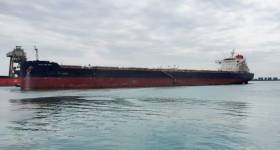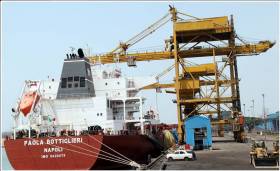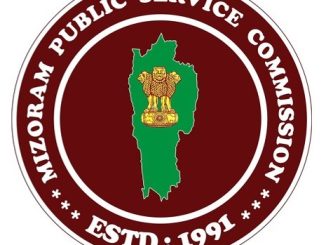
The Major Port Authorities Act, 2021 provide for regulation, operation and planning of Major Ports in India and vests the administration, control and management of such ports upon the Boards of Major Port Authorities. The legislation empowers these ports to perform with greater efficiency on account of increased autonomy in decision making and by modernizing their institutional framework.
These ports have been empowered to fix Scale of Rates for port services and assets. PPP concessionaires are free to fix tariffs based on market conditions etc. The compact Board with professional independent Members is capable of strengthening decision-making and strategic planning.
The total capacity of Major Ports and the amount of cargo handled prior to the commencement of the Act is given as under:
| Year | Capacity
(in MTPA*) |
Cargo Volume
(in Million Tonnes) |
| 2018-19 | 1514.09 | 699.10 |
| 2019-20 | 1534.91 | 704.93 |
| 2020-21 | 1560.61 | 672.68 |
* million tonnes per annum
Connectivity is one of the critical enablers for ports as it is the end to end effectiveness of the logistics system that drives competitiveness for industry. Sagarmala programme has a dedicated pillar of Port connectivity projects for enhancing connectivity between ports and domestic production / consumption centers.
There are 190 road and rail connectivity projects worth Rs. 1.22 lakh crore identified for implementation under Sagarmala focusing on connectivity of major and non-major ports. Out of which, 50 projects have been completed and 140 projects are in various stages of development and implementation. These projects are primarily being implemented by Ministry of Road, Transport and Highways (MoRTH), Major Port Authorities and other State agencies.
The Government has taken several initiatives towards Port modernization, mechanization and digitalization with emphasis on ease of doing business initiatives. This includes the introduction of web-based e-forms, direct port delivery, container scanners, radio frequency identification based systems for gate automation, single window interface for facilitating trade and integration of more and more sea ports with the Port Community System software.
Further, as part of Maritime India Vision (MIV) 2030, globally benchmarked targets have been defined to help India develop best-in-class port infrastructure. The development of Indian Ports is estimated to drive cost savings to the tune of Rs. 6,000-7,000 Crore per annum for EXIM clients and help unlock Rs. 70,000 – 75,000 Crore worth of potential revenue. MIV 2030 targets 423 MTPA of capacity addition at Major Ports for the next 10 years. A total investment cost of over Rs. 33,400 Crore has been envisaged for this capacity expansion. Out of this, approximately 95% capacity expansion is likely to be planned under Public Private Partnership (PPP) / Captive mode by Major Ports.
This information was given by the Union Minister for Ports, Shipping and Waterways, Shri Sarbananda Sonowal in a written reply to the Rajya Sabha.







Leave a Reply
You must be logged in to post a comment.